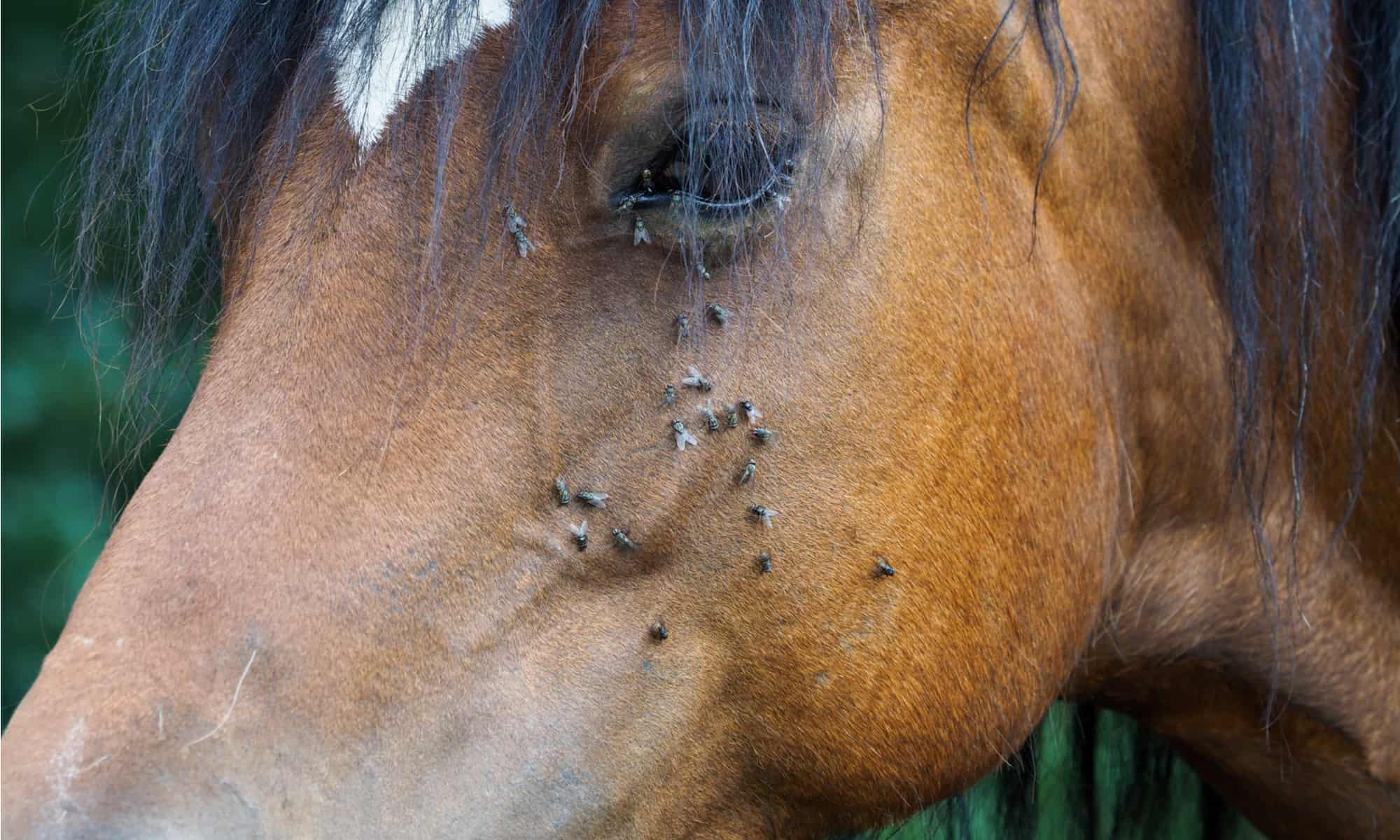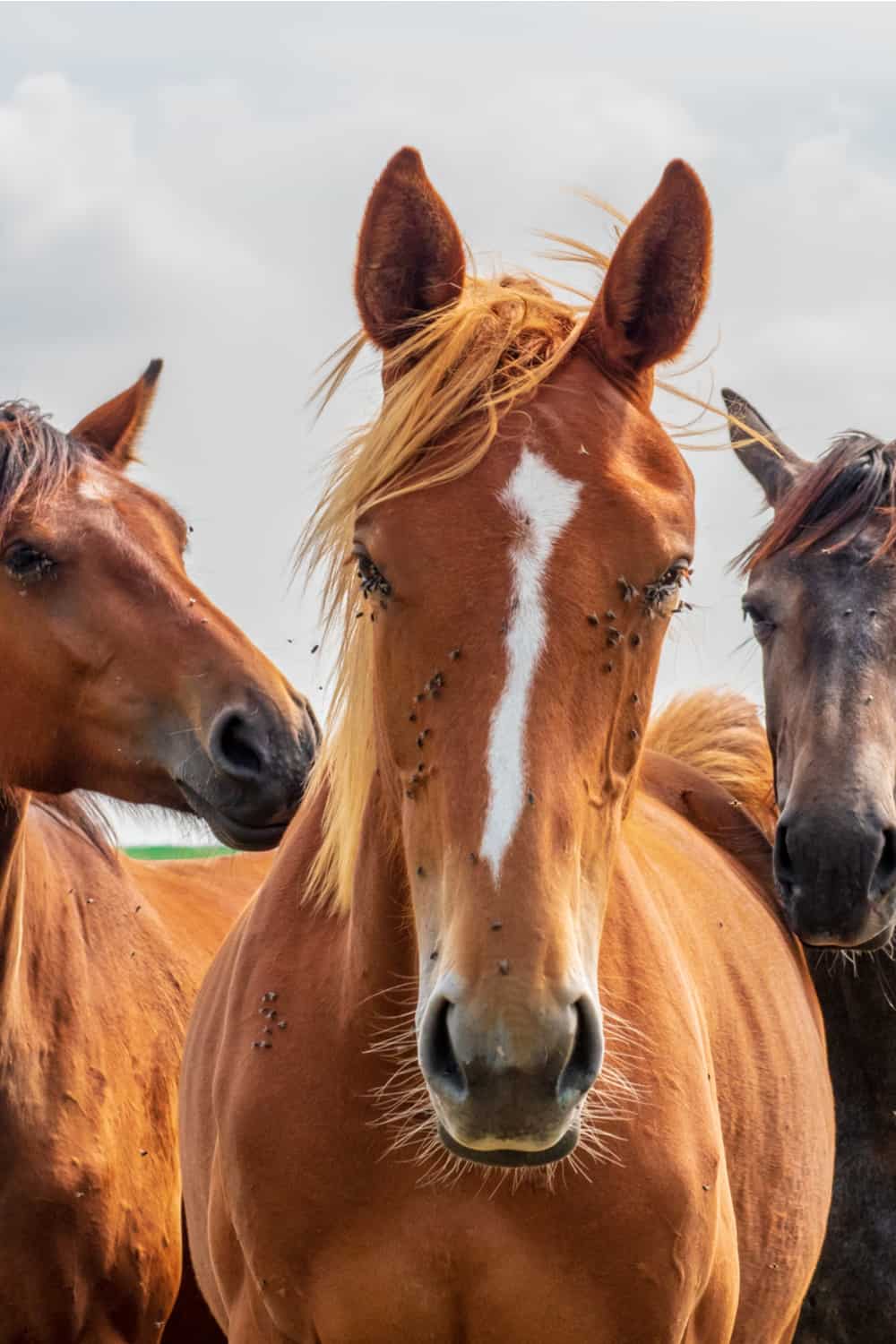Horse flies are some of the peskiest insects alive. Although they mostly bite horses and other livestock, they enjoy feasting on humans too. They’ll pierce through their victims’ skin with their razor-sharp mouthparts, leaving behind painful wounds.
To get rid of horse flies on your property, you need to first understand their life cycle and propagation habits. As such, one of the questions you should ask yourself is, “How long do horse flies live?”
This article explores the life of a horse fly to help answer this question, so you can effectively get these insects under control. Read on!
What Are Horse Flies?
Also known as yellow flies, horse flies are large, dark flies belonging to the Tabanidae family. You will mostly see them during summer, buzzing around animals (notably horses, cows, and other livestock) and humans.
You can generally identify them by their size. They are much bigger than the normal fly, usually around one inch long. The flies can be distinguished by their color too; the upper segment of their body is white with vertical black lines and the lower part is solid black.
Most people often confuse horse flies with deer flies that are also notorious for biting animals and humans. But deer flies are smaller and have dark bands on their wings.
While horse flies can be found in almost every stable or grazing land in the United States, they are more prevalent in hot, humid states like Florida. You may also spot them in deserts and mountain meadows.
They are some of the most feared summer pests, generally loathed for their unpleasant, burning bite. Horse flies are also quite persistent; once they have landed on a target, they will not leave until they have feasted on its blood.
The female flies, in particular, are the most annoying because they are the ones who bite. With mouthparts as sharp a blade, they will cut through the skin of both animals and humans and feed on their blood, leaving ugly wounds in their wake.
And because the insects usually release salivary secretions that inflame the wound, the victims feel pain and discomfort and some even develop allergic reactions or serious skin infections. Plus these flies often hop from one host to the other, meaning, they may also spread animal and human diseases when feeding.
Male horse flies are often less dangerous because they feed off nectar. The females usually need to suck on blood so they can lay eggs.
Is A Horse Fly Bite Dangerous?
Apart from the temporary pain you will experience after the bite, a horse fly bite will generally be harmless.
The only time you should be concerned about horse flies is when they are constantly feeding on your horse. This is because the insects are known to carry swamp fever (equine infectious anemia) that can be life-threatening to horses.
If your horse is infected with the disease, they may start experiencing fever, hemorrhage, and other general illnesses. Some horses will not show any symptoms but can still transfer the illness to other equines.
How Long Does a Horse Fly Live?
A horse fly lives for only 30 days; only a few will live up to 60 days. However, it is important to note that this is not the whole lifespan of horse flies. The insect goes through three other stages before it becomes an actual horse fly. The entire life cycle can take an entire year to complete, with the larval stages of some horse fly species taking up to three years.
Horse flies, like most flies, go through four major stages to become the true insects we see today. We have briefly discussed each of the stages below:
Stage 1: Egg
The life of a horse fly starts as an egg. Usually, the females lay between 20 to 1, 000 eggs, grouped in clusters.
You will mostly see the eggs on the surfaces of aquatic plants, but in some cases, the insects will deposit the eggs on rocks and sticks.
The eggs look like teeny tiny cylinders, and when they are first deposited, they appear creamy white. But this color doesn’t last long; after a few hours, the eggs start to turn gray or black.
It typically takes about 5 to 12 days for horse fly eggs to hatch. But this period will depend on the conditions of the surrounding environment. If the eggs are deposited in a warm environment, they can hatch even in 3 days. In colder regions, they will take a little bit longer.
Stage 2: Larva
When the egg hatches, larvae are born, and horse flies usually remain at this stage for one to three years.
The larvae crawl from the egg into the nearby mud or water and start digging into the soil. Some are carried by the water to dry land where they feed on organic matter, small insects, earthworms, and other horse fly larvae. In the spring, the larvae are all mature, and they enter the pupal stage.
Stage 3: Pupa
Also known as the cocoon stage, the pupal stage often takes place on dry land. Although the horse fly may appear inactive from the outside, below the surface, the larval body inside is being broken down to form an adult insect.
This is the stage where insects are the most vulnerable and the majority will choose to pupate in a hidden site away from predators. Others will camouflage the cocoon with the surroundings.
The pupal stage usually lasts between 6 and 12 days, after which the imago or adult horse fly pops out.
Stage 4: Adult/Imago
In late summer, the adult horse fly bursts out of the larval cocoon and enters the surrounding environments. Adult flies are excellent fliers and will start looking for food and a mate right away.
While males will feed off pollen and sweet plant juices, the females will go searching for blood. They will mostly target horses and cows, but they will also slice through your skin if you get in their way.
This video summarizes the life cycle of a fly. And because all flies go through the same development stages in their life cycle, it will give you a rough idea of how the egg, larva, pupa, and adult horse flies look like.
How to Get Rid of Horse Flies (4 Easy Steps)
Step 1: Identify the Insect
Before administering any treatment, make sure to confirm that the insect in question is actually a horse fly. This will help you choose the right treatment products, which will save you a considerable amount of time and money. If you’re not sure how a horse fly looks like, consider working with a pest control service.
Step 2: Assess the Situation
After you have established that you are indeed dealing with horse flies, the next thing you need to do is examine where the insects are most active so you can understand the severity of the infestation.
Start with areas near stables, places with heaps of manure, and areas where your horses and other livestock go frequently. You may also want to check areas near ponds, pastures, and swimming pools.
Knowing the areas where the flies visit the most will help you decide not only where to apply treatment but also how much treatment these places need.
Step 3: Start Treatment
There are a number of things you can use to get rid of horse flies. Below are the two most common:
- Disposable fly traps: These contain a fly attractant that is activated using water and sunlight. The flies get lured into the trap where they later drown in the solution.
- Chemicals: You can use chemicals like pyrethroids, organochlorides, and organophosphates to kill horse flies. But because some products may do the job better than others, it would be wise to rotate different chemicals during the application of your treatment. Just make sure to read the instruction label of each product.
Step 4: Take Horse Fly Preventative Measures
Since horse flies are some of the most difficult pests to get rid of, when you finally succeed in getting them under control, you want to do everything you can to keep their numbers down. Some of the things you can do include:
- Keeping the livestock area clean.
- Building proper drainage systems so that no water stagnates near the livestock.
- Trimming weeds and long grasses, as these are some of the major breeding grounds for horse flies.
- Providing a shaded shelter for livestock.
- Performing rituals like gelding during winter when the population of horse flies is minimal.
The Takeaway
Although horse flies have a short lifespan, they can be a nuisance not only because their sore bites make their victims uncomfortable but also because they are difficult to completely get rid of.
You can use traps and chemicals to manage the infestation, but the most effective cause of action would be to prevent the flies from invading your property in the first place, by keeping the livestock area clean, having good drainage systems, and keeping weeds and long grasses short.










